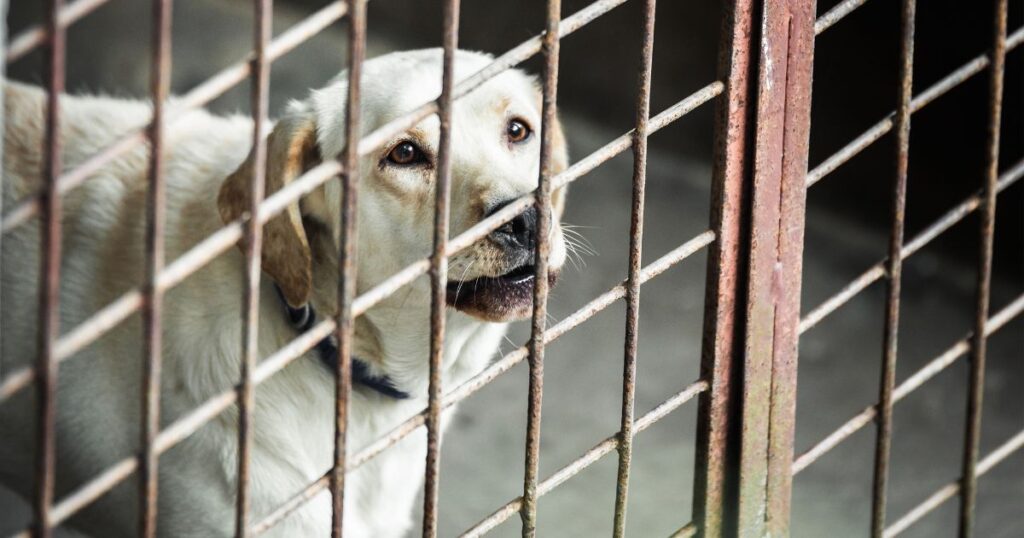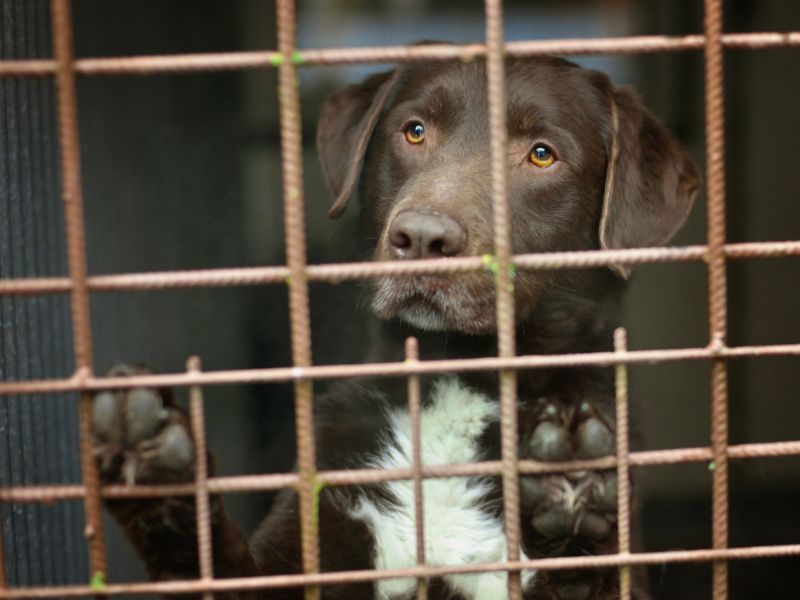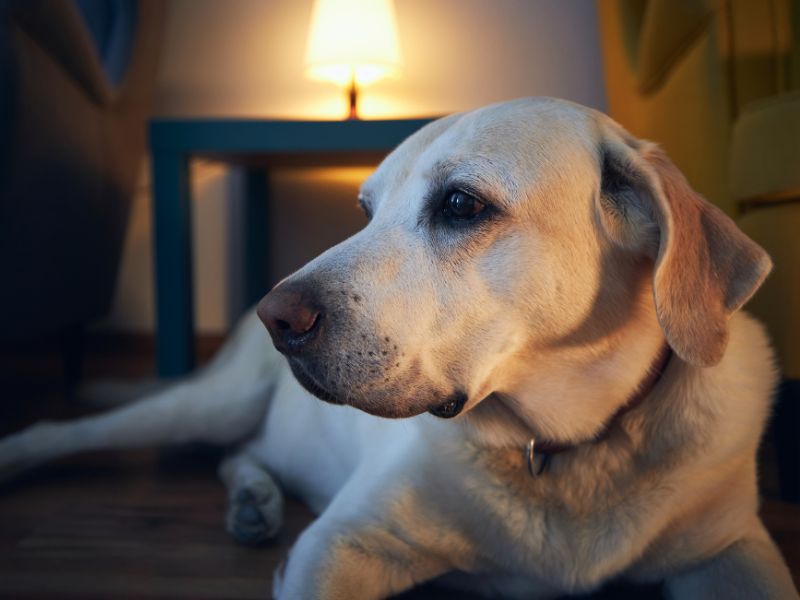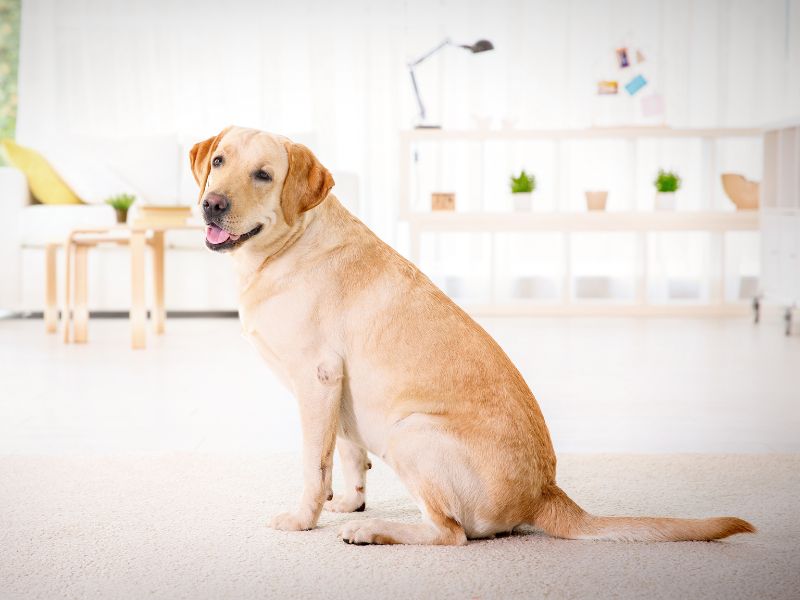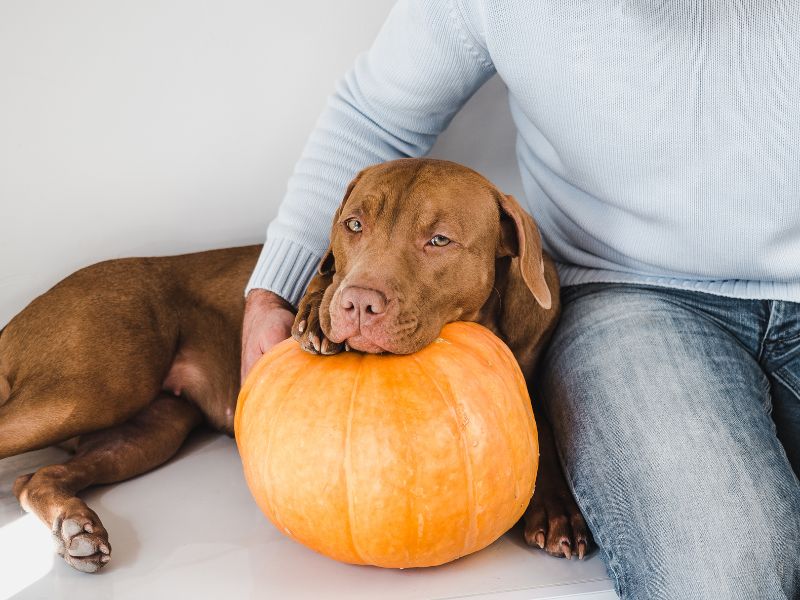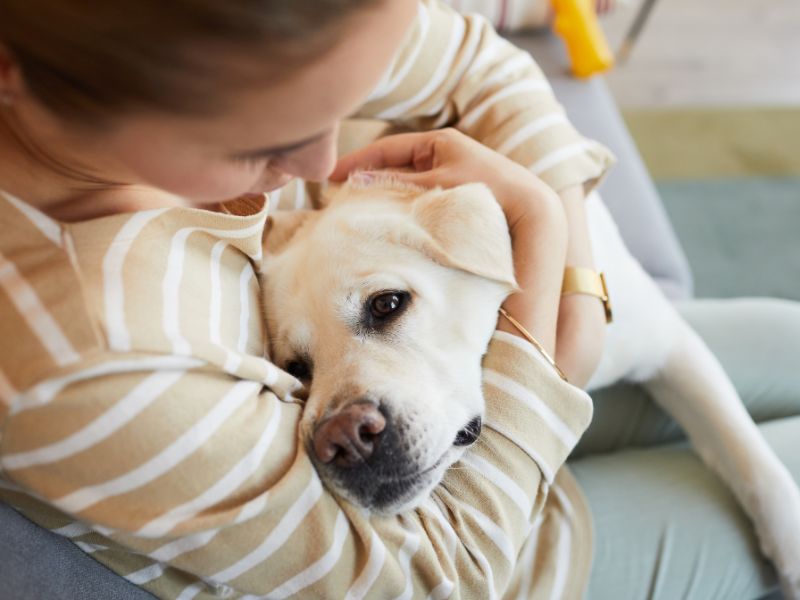Bringing home a rescue dog can be an exciting and rewarding experience. Not only are you giving a loving home to a dog in need, but you are also gaining a loyal companion. However, it is important to be prepared for the challenges that come with bringing home a rescue dog.
One of the most important things to keep in mind is that rescue dogs often come with a history of trauma and neglect. As a result, they may require extra patience and understanding as they adjust to their new home. It is important to provide them with a safe and comfortable environment where they can feel secure.
Another important factor to consider is the dog’s temperament and personality. Different dogs have different needs and personalities, so it is important to find a dog that is a good fit for your lifestyle and living situation. It is also important to establish boundaries and rules early on to help the dog feel secure and understand their place in the family.
What Is It Like To Bring Home A Rescue Dog?
Bringing home a rescue dog can be an exciting and rewarding experience. However, it can also be a challenging one. It’s important to understand that rescue dogs often come with a history that may include neglect, abuse, or trauma. Therefore, it’s crucial to be patient and understanding as your new furry friend adjusts to their new home.
One of the first things to keep in mind is that rescue dogs may be scared or anxious in their new environment. It’s important to give them time to adjust and get comfortable. Providing them with a safe and quiet space can help them feel secure. This could be a crate or a designated area in the house where they can retreat to when they need some alone time.
Another thing to consider is that rescue dogs may have some behavioral issues. These can range from separation anxiety to aggression towards other dogs or people. It’s important to work with a professional trainer or behaviorist to address any issues that may arise.
Finally, it’s important to be prepared for the financial and time commitments that come with bringing home a rescue dog. This includes regular vet visits, food, toys, and training. However, the love and companionship that a rescue dog can provide make it all worth it.
Overall, bringing home a rescue dog can be a wonderful experience, but it’s important to be prepared for the challenges that may come with it. With patience, understanding, and love, you can provide your new furry friend with a happy and healthy home.
Is Bringing Home A Rescue Dog Right For Me?
Bringing home a rescue dog can be a rewarding experience, but it’s important to consider whether it’s the right choice for you. It requires time, effort, and patience to help a dog adjust to their new home. Here are some factors to consider before adopting a rescue dog:
Lifestyle
It’s important to consider your lifestyle and how it will fit with a new dog. Do you have enough time to dedicate to training, exercise, and care? Are you willing to make changes to accommodate a dog’s needs? For example, if you work long hours, a dog that requires a lot of exercise may not be the best fit.
Home Environment
Your home environment is another important factor to consider. Do you have enough space for a dog to feel comfortable and safe? Are there any hazards that could be a danger to a dog? It’s important to create a safe and secure environment for a new dog, especially if they have come from a difficult background.
Financial Responsibility
Bringing home a rescue dog also comes with financial responsibility. You will need to provide food, toys, bedding, and veterinary care. It’s important to consider whether you can afford the cost of owning a dog, including unexpected expenses such as emergency veterinary care.
Emotional Preparedness
Finally, it’s important to consider whether you are emotionally prepared to bring a new dog into your life. Rescue dogs may have experienced trauma or neglect, and may require extra patience and understanding. It’s important to be prepared for the challenges that may come with helping a dog adjust to their new home.
Overall, bringing home a rescue dog can be a wonderful experience, but it’s important to carefully consider whether it’s the right choice for you. By taking the time to evaluate your lifestyle, home environment, financial situation, and emotional preparedness, you can help ensure a successful adoption and a happy life for you and your new furry friend.
Plan To Spend Special Time With Your Rescue Dog
Bringing a rescue dog home can be an exciting and rewarding experience, but it can also be challenging. Your new furry friend may take some time to adjust to their new surroundings and may need some extra attention and care. One way to help your rescue dog feel more comfortable and secure is to plan to spend special time with them.
Spending special time with your rescue dog can help you bond with them and build a strong relationship. This can be especially important if your dog has had a difficult past and needs extra love and attention. You can plan to spend special time with your dog in many different ways, such as:
- Going on a walk or hike together
- Playing games, such as fetch or tug-of-war
- Teaching them new tricks or commands
- Cuddling or grooming them
- Giving them treats or special toys
It’s important to remember that every dog is different, and what works for one dog may not work for another. You should take the time to get to know your rescue dog and figure out what they enjoy and what makes them feel comfortable. By spending special time with your rescue dog, you can help them feel loved, safe, and secure in their new home.
How To Prepare For Your Rescue Dog
Bringing home a rescue dog can be an exciting and rewarding experience. However, it is important to prepare for the arrival of your new furry friend to ensure a smooth transition. Here are some tips to help you prepare for your rescue dog:
1. Create a Safe and Comfortable Space
Before bringing your rescue dog home, make sure you create a safe and comfortable space for them. This could be a crate, a bed, or a designated area in your home. Make sure the space is clean, quiet, and free from any hazards that could harm your new pet.
2. Purchase Essential Supplies
To ensure your rescue dog has everything they need, purchase essential supplies such as food, water bowls, a leash, collar, and toys. You may also want to consider purchasing a dog gate or playpen to keep your dog contained in a safe area.
3. Research Your Dog’s Breed
Researching your dog’s breed can help you better understand their behavior, temperament, and any specific needs they may have. This can help you provide the best care for your new pet and ensure they are happy and healthy.
4. Establish a Routine
Establishing a routine is important for your rescue dog’s well-being. This includes feeding, exercise, and potty breaks. Stick to a consistent schedule to help your dog feel secure and comfortable in their new home.
5. Prepare Your Family and Home
Preparing your family and home is crucial before bringing home a rescue dog. Make sure everyone in your household is aware of the new arrival and knows how to interact with your new pet. You may also want to consider removing any hazardous items from your home and securing any loose wires or cords.
By following these tips, you can prepare for your rescue dog and ensure a smooth transition into your home.
Making Your Rescue Dog Part Of Your Family
Bringing a rescue dog home can be a rewarding experience. However, it is important to remember that your new furry friend may need some time to adjust to their new surroundings. Here are some tips to help make your rescue dog feel like a part of your family:
Establish a Routine
Dogs thrive on routine, so it is important to establish a daily routine as soon as possible. This includes feeding, exercise, and playtime. Try to stick to the same schedule every day, as this will help your dog feel more secure and comfortable in their new home.
Spend Quality Time Together
Spending quality time with your new rescue dog is crucial in building a strong bond. This can include taking walks, playing fetch, or simply snuggling on the couch. It is important to show your dog love and affection to help them feel like a part of the family.
Involve Your Dog in Family Activities
Involving your dog in family activities is a great way to make them feel like they are a part of the family. This can include taking your dog on family outings, such as hikes or trips to the beach, or simply having them join in on family game night.
Consider Training
Training is an important part of making your rescue dog feel like a part of the family. It can help establish boundaries and build trust between you and your new furry friend. Consider enrolling your dog in obedience classes or working with a professional trainer to help them learn basic commands and good behavior.
Provide a Safe Space
It is important to provide your rescue dog with a safe space where they can retreat to when they need some alone time. This can be a crate, a bed, or simply a quiet corner of the house. Make sure your dog knows that this is their space and that they can go there whenever they need to feel safe and secure.
By following these tips, you can help make your rescue dog feel like a part of your family and provide them with a loving and secure home.
Restricted Access For Your Rescue Dog
When bringing home a rescue dog, it is essential to limit their access to the rest of the house until they are fully trained. One way to do this is by using baby gates to restrict their access to certain areas. This can help prevent accidents, such as chewing on furniture or getting into hazardous materials.
Another way to limit access is by crate training. Crates provide a safe and secure space for your rescue dog to rest and relax. It can also be used as a tool for potty training and preventing destructive behavior. However, it’s important to note that crates should never be used as a form of punishment.
It’s also important to establish boundaries and rules for your rescue dog. This can include teaching them to stay off furniture or not allowing them in certain rooms. Consistency is key when training your rescue dog, and it’s important to have all family members on the same page.
By limiting your rescue dog’s access to certain areas and establishing boundaries, you can help create a safe and comfortable environment for them to thrive in.
Sleeping Area
The sleeping area is an important consideration when bringing home a rescue dog. It’s essential to provide a comfortable and safe sleeping space where your new furry friend can rest and feel secure.
One of the first things to consider is the location of the sleeping area. It should be in a quiet spot away from the main traffic areas of the house. A crate or bed in a separate room is ideal.
If you choose to use a crate, make sure it is large enough for your dog to stand up, turn around, and lie down comfortably. You can place a soft bed or blanket inside the crate to make it more comfortable.
It’s also important to establish a routine for bedtime. Take your dog outside to go potty before bedtime and make sure they have access to water. You can also provide a chew toy or treat to help them settle down.
Remember that it may take some time for your rescue dog to adjust to their new sleeping area. Be patient and consistent with your routine, and your furry friend will soon feel safe and secure in their new home.
Potty Training Your Shelter Lab
Potty training a rescue dog can be challenging, but with patience and consistency, it can be done. The first step is to establish a routine for your dog. Take your dog outside frequently, especially after eating, drinking, and playing. It is recommended to take your dog out every two hours during the day and once or twice during the night.
It is important to praise and reward your dog when they go potty outside. This can be done with verbal praise, treats, or toys. Positive reinforcement is key to successful potty training.
If your dog has an accident inside, do not punish them. Clean up the mess thoroughly and take your dog outside immediately. Punishing your dog will only confuse and scare them.
Another helpful tip is to limit your dog’s access to the house until they are fully trained. You can use baby gates or keep your dog in a crate when you are not home. This will prevent accidents and help your dog learn to hold their bladder.
Overall, potty training a shelter lab takes time and patience. With a consistent routine and positive reinforcement, your dog will learn to go potty outside in no time.
Preparing Your Home For Your Rescue Dog
Bringing a new dog home can be an exciting and stressful experience, especially if it’s a rescue dog. Preparing your home for your new furry friend is an important step to ensure that they feel safe and comfortable in their new environment. Here are a few things to consider when preparing your home for your rescue dog:
- Create a designated space for your dog: It’s important to create a designated space for your dog where they can feel safe and comfortable. This could be a crate, a dog bed, or even a cozy corner of the room. Make sure that the space is clean, quiet, and away from any potential hazards like electrical cords or sharp objects.
- Remove potential hazards: Before bringing your dog home, it’s important to remove any potential hazards from your home. This includes things like toxic plants, cleaning supplies, and small objects that your dog could choke on. Keep all of your valuable items out of reach, and make sure that your dog cannot access any areas of the house that are off-limits.
- Stock up on supplies: You’ll need to stock up on supplies before bringing your dog home. This includes food, water bowls, a collar and leash, toys, and treats. Make sure that you have everything that your dog needs to feel comfortable and happy in their new home.
- Establish a routine: Dogs thrive on routine, so it’s important to establish a routine as soon as possible. This includes feeding times, potty breaks, and exercise. Stick to a consistent routine to help your dog feel more comfortable and secure in their new home.
By taking the time to prepare your home for your rescue dog, you can help ensure that they feel safe and comfortable in their new environment. With a little bit of preparation and patience, you can help your new furry friend adjust to their new home and become a happy and healthy member of your family.
Bringing Home Senior Rescue Dogs
Bringing home a senior rescue dog can be a rewarding experience. However, it is important to keep in mind that senior dogs may require more attention and care than younger dogs. Here are a few things to consider when bringing home a senior rescue dog:
- Medical History: It is important to gather as much information as possible about the dog’s medical history. This includes any previous illnesses, surgeries, or medications the dog may be taking. This information will help you provide the appropriate care for your new furry friend.
- Special Needs: Senior dogs may have special needs, such as mobility issues or dietary restrictions. It is important to identify and address these needs to ensure your dog is comfortable and healthy.
- Training: Older dogs may have already been trained, but may also have developed bad habits. Consistent training can help address any unwanted behaviors and help your dog adjust to their new home.
- Exercise and Playtime: While senior dogs may not be as active as younger dogs, it is still important to provide them with regular exercise and playtime. This can help keep them healthy and happy.
Overall, bringing home a senior rescue dog can be a wonderful experience. With proper care and attention, these dogs can thrive in their new homes and bring joy to their new families.
Safe Area In The Back Yard
When bringing home a rescue dog, it is important to create a safe area in the backyard where the dog can play and exercise. This area should be free from potential hazards such as sharp objects, poisonous plants, and holes. A secure fence should be installed to prevent the dog from escaping and to keep other animals out.
The safe area should also have a shaded area where the dog can rest and cool off during hot weather. A doghouse or shelter can be provided where the dog can take shelter during rain or snow. It is important to keep the area clean and free from feces to prevent the spread of diseases.
To make the safe area more enjoyable for the dog, toys and play equipment can be added such as balls, frisbees, and agility equipment. A water bowl should be provided to keep the dog hydrated during playtime.
By creating a safe area in the backyard, the rescue dog can enjoy outdoor activities in a secure and fun environment.
Equipment For Exercising Your Shelter Dog
When it comes to exercising your shelter dog, there are a few pieces of equipment that can make the process easier and more enjoyable for both you and your furry friend. Here are two essential items to consider:
Body Harness
A body harness is a great alternative to a traditional collar for dogs that tend to pull on their leash. Unlike collars, which can put pressure on a dog’s neck and throat, a harness distributes the pressure more evenly across their body. This can be especially important for shelter dogs, who may not have been taught how to walk on a leash and may be more prone to pulling.
When choosing a body harness for your shelter dog, look for one that fits securely but is not too tight. You should be able to fit two fingers between the harness and your dog’s body. Also, make sure the harness has a sturdy ring for attaching a leash.
A Long Line
A long line is a great tool for giving your shelter dog more freedom to explore while still keeping them under control. A long line is essentially a longer leash, usually between 20 and 30 feet, that allows your dog to roam and sniff around while still being connected to you.
When using a long line with your shelter dog, be sure to supervise them closely and keep them away from any potential hazards. Also, be aware that a long line can become tangled or caught on objects, so it’s important to keep an eye on it at all times.
Overall, investing in a body harness and a long line can make a big difference in your shelter dog’s exercise routine. By providing them with the right equipment, you can help them feel more comfortable and confident while exploring their new surroundings.
Other Supplies For Bringing Home A Rescue Dog
Bringing home a rescue dog can be an exciting and rewarding experience. However, it is important to make sure that you have all the necessary supplies to ensure a smooth transition for your new furry friend. Here are some other supplies to consider when bringing home a rescue dog:
1. Crate or Dog Bed
A crate or dog bed can provide a safe and comfortable space for your new dog to relax and sleep. It can also help with house training and prevent destructive behavior when you are not home.
2. Leash and Collar
A leash and collar are essential for walking your dog and keeping them safe. Make sure to choose a collar that fits properly and is comfortable for your dog.
3. Food and Water Bowls
Stainless steel or ceramic bowls are recommended as they are durable and easy to clean. Make sure to choose bowls that are the appropriate size for your dog.
4. Dog Food
It is important to choose a high-quality dog food that meets your dog’s nutritional needs. Consult with your veterinarian to determine the best food for your dog.
5. Treats
Treats can be a great way to reward your dog for good behavior and help with training. Choose treats that are low in calories and made with quality ingredients.
6. Toys
Toys can provide mental and physical stimulation for your dog. Choose toys that are appropriate for your dog’s size and activity level.
By having these supplies on hand, you can help ensure a smooth transition for your new rescue dog and provide them with a comfortable and happy home.
Plan Your Dog’s Routine
Creating a routine is essential when bringing home a rescue dog. It helps them feel secure and know what to expect. It’s important to establish a routine from day one. This means having a set schedule for feeding, walking, playtime, and bedtime.
When planning your dog’s routine, consider their age, breed, and energy level. Younger dogs may need more frequent potty breaks, while older dogs may need more rest time. A high-energy breed may require more exercise and playtime than a low-energy breed.
It’s also important to create a designated spot for your dog to rest and feel safe. This could be a crate, bed, or quiet corner of the room. Make sure your dog has access to their designated spot at all times, especially when they need a break from activity or stimulation.
Additionally, gradually introduce your dog to new activities and experiences. This can include meeting new people, going on car rides, and exploring new places. Introduce new activities slowly and in a positive manner, using treats and praise to reinforce good behavior.
Overall, creating a routine for your rescue dog is key to helping them adjust to their new home and feel secure. With patience and consistency, your dog will quickly learn their new routine and feel right at home.
The Big Day
Bringing home a rescue dog is an exciting and emotional experience for both the dog and the new owner. The first day is crucial in setting the tone for the rest of the dog’s life in the new home. It is important to make sure that the dog feels comfortable and safe in their new environment.
Before bringing the dog home, the new owner should prepare a designated area for the dog, such as a crate or a room, to help them feel secure and reduce stress. It is also important to have all the necessary supplies, such as food, water, bowls, toys, and a leash, ready for the dog’s arrival.
Once the dog arrives, it is recommended to take them for a long walk to help them decompress and release some energy. During the walk, the new owner can start to establish a bond with the dog by using positive reinforcement techniques, such as treats and praise.
After the walk, the dog should be introduced to their designated area, where they can rest and feel safe. It is important to give the dog some alone time to adjust to their new surroundings. The new owner should also establish a routine for feeding, potty breaks, and playtime to help the dog feel secure and comfortable in their new home.
Overall, the first day is an important step in the process of bringing home a rescue dog. With patience, love, and proper care, the new owner can help the dog adjust to their new life and create a strong bond that will last a lifetime.
Get Pippa’s Training Tips!
Pippa’s online dog training courses are a great resource for anyone bringing home a rescue dog. She emphasizes the importance of setting up a routine from day one and using positive reinforcement to help your dog adjust to their new home.
One of the key things to keep in mind is to be patient. Your rescue dog may have had a difficult past and it may take some time for them to feel comfortable and safe in their new environment. Pippa recommends setting up one or two quiet spots for your dog to retreat to if they feel overwhelmed or anxious.
It’s also important to transition their food slowly, as sudden changes can cause digestive issues. Pippa suggests gradually mixing in the new food with their old food over a period of several days. Additionally, it’s a good idea to put away toys and bones during the initial adjustment period to prevent resource guarding.
Finally, Pippa advises minimizing visitors and staying home as much as possible during the first few weeks with your new dog. This will help them feel more secure and give you the opportunity to establish a strong bond with them. With patience, consistency, and positive reinforcement, your rescue dog will soon feel right at home.
How Your Rescue Dog Might Feel?
Bringing home a rescue dog can be an exciting and rewarding experience, but it’s important to remember that your new furry friend may be feeling scared, confused, and overwhelmed. After all, they’ve likely been through a lot before coming to your home. Here are some common emotions your rescue dog might be experiencing:
- Fear: Your rescue dog may be afraid of new people, new places, and new experiences. They may cower, shake, or hide when they feel scared. It’s important to be patient and gentle with your dog, and to give them time to adjust to their new surroundings.
- Anxiety: Your rescue dog may feel anxious about being in a new environment. They may whine, bark, or pace when they’re feeling nervous. Providing a safe and comfortable space for your dog, such as a crate or a designated area with their bed and toys, can help them feel more secure.
- Trust issues: Your rescue dog may have trust issues due to past experiences with humans. They may be hesitant to approach you or other people, or they may be overly clingy and needy. It’s important to build trust with your dog slowly and consistently, using positive reinforcement and lots of love and patience.
Remember that every dog is different, and your rescue dog may have their own unique set of emotions and behaviors. By being patient, kind, and understanding, you can help your rescue dog feel safe, secure, and loved in their new home.
How You Might Feel When Your Rescue Dog Arrives
Bringing home a rescue dog can be an exciting and rewarding experience. However, it is also normal to feel a range of emotions when your new furry friend arrives. Here are some common feelings you might experience:
- Excitement: You may feel excited to finally bring your new dog home and start a new chapter in your life together.
- Anxiety: It is normal to feel anxious about how your new dog will adjust to their new home, and whether you will be able to provide them with everything they need.
- Uncertainty: You may feel uncertain about how to care for your new dog, especially if you are a first-time dog owner.
- Overwhelmed: It is easy to feel overwhelmed by the responsibility of caring for a new dog, especially if they have special needs or require extra attention.
- Gratitude: You may feel grateful to have the opportunity to provide a loving home for a dog in need.
Remember that it is normal to feel a range of emotions when bringing home a rescue dog. It is important to take things one step at a time and to seek help and support when needed. With patience, love, and dedication, you and your new dog can build a happy and fulfilling life together.
Collecting Your Rescue Dog
When it comes to collecting your rescue dog, there are a few things to keep in mind to ensure a smooth transition for both you and your new furry friend.
Firstly, make sure to bring a leash and collar with you to the shelter or rescue center. This will allow you to safely transport your dog from the facility to your home. It’s also a good idea to have a crate or carrier in case your dog gets anxious or scared during the car ride.
Once you arrive home, it’s important to establish a routine for your new dog. This includes setting up a designated spot for your dog to eat, sleep, and play. Providing your dog with a consistent routine will help them feel secure and comfortable in their new environment.
It’s also important to give your rescue dog time to adjust to their new surroundings. This may mean keeping them on a leash or in a crate while you’re away to prevent any destructive behavior. Gradually introduce your dog to different areas of your home and be patient as they get used to their new surroundings.
Finally, don’t forget to schedule a visit with your veterinarian to ensure your dog is healthy and up-to-date on all necessary vaccinations. By following these tips, you can help your rescue dog feel safe and happy in their new home.
Your Rescue Dog Doesn’t Know You Yet
Bringing home a rescue dog can be an exciting and rewarding experience. However, it’s important to remember that your new furry friend doesn’t know you yet. He may be scared, anxious, or confused, and it’s up to you to help him feel safe and secure in his new home.
One way to help your rescue dog adjust is to establish a routine from day one. Dogs thrive on routine, and having a predictable schedule can help your new pet feel more comfortable and secure. This can include regular feeding times, walks, and playtime.
Another important factor to consider is your dog’s socialization. It’s important to expose your new pet to different people, places, and experiences to help him feel comfortable and confident in his new surroundings. However, it’s important to do so in a controlled and safe manner, and to always be aware of your dog’s body language and behavior.
Finally, it’s important to be patient with your new rescue dog. It may take time for him to adjust to his new home, and he may have some bad habits or behaviors that need to be corrected. However, with time, patience, and consistent training, your rescue dog can become a beloved and well-behaved member of your family.
Safe Handling Of Strange Dogs
When bringing home a rescue dog, it’s important to remember that they may be scared, anxious, or have had negative experiences with humans in the past. As a result, it’s crucial to handle them safely to avoid any potential harm to yourself or the dog.
Firstly, it’s important to approach the dog calmly and avoid making any sudden movements that could startle them. If the dog seems nervous or aggressive, it’s best to give them space and avoid direct eye contact.
When interacting with a strange dog, it’s important to pay attention to their body language. Signs of fear or aggression include growling, barking, raised fur, and bared teeth. If the dog displays any of these behaviors, it’s best to back away slowly and give them space.
If you need to handle the dog, such as when introducing them to a new environment or taking them for a walk, it’s important to use proper equipment such as a leash and harness. This will ensure that you have control over the dog and can prevent them from running away or getting into dangerous situations.
In addition, it’s important to avoid physical punishment or aggressive behavior towards the dog. This can lead to further fear and anxiety and may even cause the dog to become aggressive towards you. Instead, use positive reinforcement techniques such as treats and praise to encourage good behavior.
By following these tips, you can ensure that you handle your rescue dog safely and create a positive and trusting relationship with them.
Bringing Home A Rescue Dog – The First Few Days
Bringing home a rescue dog is an exciting yet overwhelming experience. The first few days are crucial in setting the foundation for a happy and healthy relationship between the dog and its new family.
The first thing to do when bringing home a rescue dog is to give them space to decompress. This means allowing them to explore their new surroundings and get comfortable at their own pace. It is important to not force any interactions or experiences on them during this time.
Another important aspect of the first few days is establishing a routine for the dog. This includes setting up a designated area for sleeping, feeding, and going potty. Consistency is key in helping the dog feel secure and comfortable in their new home.
It is also important to minimize visitors and keep the dog at home during the first few days. This allows the dog to adjust to their new environment without any added stress.
Positive reinforcement is essential in building trust and a strong bond between the dog and its new family. Offering treats, praise, and affection can help the dog feel loved and secure.
By following these tips, the first few days of bringing home a rescue dog can be a positive experience for both the dog and its new family.
How To Settle In A Rescue Dog And Help Them Feel At Home
Bringing home a rescue dog can be a wonderful experience, but it can also be overwhelming for both you and your new furry friend. It’s important to create a safe and comfortable environment for your dog to help them settle in and feel at home. Here are a few tips to help you get started:
Establish a Routine
Dogs thrive on routine, and it can be especially important for rescue dogs who may have experienced a lot of instability in their past. Establish a daily routine for feeding, walking, and playtime, and try to stick to it as closely as possible. This will help your dog feel more secure and comfortable in their new environment.
Create a Safe Space
It’s important to create a safe space for your dog where they can retreat when they feel overwhelmed or anxious. This could be a crate, a cozy bed, or a designated corner of the room. Make sure your dog has access to plenty of water, toys, and a comfortable place to rest.
Be Patient
It’s important to be patient with your new rescue dog as they adjust to their new home. They may be scared or anxious at first, and it may take some time for them to feel comfortable around you and your family. Don’t force interactions or expect too much too soon. Instead, let your dog set the pace and be there to provide comfort and support as they settle in.
Provide Plenty of Exercise and Stimulation
Rescue dogs often have a lot of pent-up energy, so it’s important to provide plenty of exercise and stimulation to help them burn it off. Take your dog for daily walks, play fetch in the backyard, or engage in other activities that your dog enjoys. This will not only help them feel more relaxed and comfortable, but it will also strengthen your bond with your new furry friend.
By following these tips, you can help your rescue dog settle in and feel at home in their new environment. Remember, it may take some time for your dog to adjust, but with patience, love, and plenty of positive reinforcement, you can help them feel safe, secure, and happy in their new home.
Hand-Feeding Your Rescue Dog
Hand-feeding your rescue dog is an excellent way to build trust and bond with your new pet. It is especially useful for dogs that are anxious or fearful. By hand-feeding your dog, you can create a positive association with food and help your dog feel more comfortable around you.
To hand-feed your dog, start by offering small amounts of food from your hand. You can use kibble or small treats. Hold the food in your palm and let your dog take it from you. If your dog is hesitant, try placing the food on the ground near your hand and gradually move it closer until your dog is comfortable taking it from your hand.
Hand-feeding can also be used as a training tool. You can use this time to teach your dog basic commands like “sit” and “stay.” Reward your dog with a piece of food for each successful command.
It is important to note that hand-feeding should not replace regular meals. It should be used as a supplement to your dog’s regular feeding routine. Additionally, it is important to always supervise your dog during hand-feeding to prevent any choking hazards.
Reinforcing Great Behaviors
When bringing home a rescue dog, reinforcing great behaviors is essential to help them adjust to their new environment. Positive reinforcement is the most effective way to encourage good behavior and help your dog feel more comfortable in their new home.
One way to reinforce great behaviors is to use treats. Treats can be used to reward your dog for good behavior, such as sitting, staying, or coming when called. However, it is important to use treats in moderation and ensure they are healthy for your dog. Some great options include small pieces of cooked meat, cheese, or vegetables like carrots or green beans.
Another way to reinforce great behaviors is through verbal praise. Dogs love to be praised, and hearing words of encouragement can help them feel more confident and secure. Use a happy and enthusiastic tone of voice when praising your dog, and be sure to praise them immediately after they exhibit good behavior.
Consistency is key when reinforcing great behaviors. Be sure to reward your dog every time they exhibit good behavior, and avoid rewarding them for bad behavior. Over time, your dog will learn what is expected of them and will be more likely to exhibit good behavior on their own.
By reinforcing great behaviors, you can help your rescue dog adjust to their new home and become a well-behaved and happy member of your family.
Discovering Who Is The Boss?
Bringing home a rescue dog can be an exciting and rewarding experience, but it can also be challenging. One of the most important things to establish early on is who is the boss. This means that the owner needs to establish themselves as the leader of the pack and make sure the dog knows its place in the household.
To establish who is the boss, it is important to set boundaries and rules for the dog to follow. This can be achieved through consistent training and positive reinforcement. It is also important to be firm but fair with the dog, and never use physical punishment or aggression.
One effective way to establish who is the boss is by using a reward-based training system. This means that the dog is rewarded for good behavior and ignored or redirected for bad behavior. It is also important to establish a routine for the dog, including regular feeding times and exercise.
Another way to establish who is the boss is by using body language and tone of voice. Dogs are very perceptive to body language and can pick up on subtle cues from their owners. It is important to use a confident and assertive tone of voice when giving commands, and to use body language that conveys authority.
In summary, establishing who is the boss is an essential part of bringing home a rescue dog. This can be achieved through consistent training, positive reinforcement, and setting boundaries and rules for the dog to follow. By establishing yourself as the leader of the pack, you can create a happy and harmonious household for both you and your new furry friend.
Calm Handling And Patience
Bringing home a rescue dog can be challenging, but with calm handling and patience, the transition can be smoother. One of the most important things to remember is that rescue dogs may have had negative experiences in the past, making them fearful or anxious. Therefore, it is essential to be calm and patient when handling them.
One way to handle a rescue dog calmly is by using a slow and gentle approach. Sudden movements or loud noises can scare them, so it is important to approach them slowly and calmly. Additionally, it is important to avoid direct eye contact, as this can be perceived as a threat by some dogs.
Patience is also crucial when bringing home a rescue dog. It may take time for them to adjust to their new environment, and it is important to give them space and time to do so. They may be scared or anxious, and it is important to allow them to adjust at their own pace.
Another way to show patience is by using positive reinforcement. Rewarding good behavior with treats or praise can help build trust and confidence in the dog. It is important to remember that rescue dogs may have had traumatic experiences in the past, and it may take time for them to trust humans again.
In summary, calm handling and patience are essential when bringing home a rescue dog. Using a slow and gentle approach, giving them space and time to adjust, and using positive reinforcement can help build trust and confidence in the dog. With time and patience, the rescue dog can become a beloved member of the family.
Assume Your Rescue Dog Isn’t Trained
When bringing home a rescue dog, it’s important to assume they haven’t received any training. Even if they were trained before, the stress of a new environment, time in a shelter, and new signals and routines can all undo their housetraining. It’s better to let your dog out too many times than risk having an accident indoors.
To help your rescue dog get comfortable with their new home, establish a routine from day one. Set up one or two quiet spots for your dog to retreat to when they feel overwhelmed. Transition their food slowly to avoid upsetting their stomach. Put toys and bones away to prevent resource guarding. Stay home and minimize visitors to help your dog adjust to their new surroundings.
Be patient with your rescue dog. They may take some time to adjust to their new environment, and it’s important to give them the time and space they need. Use positive reinforcement to encourage good behavior. Brush up on dog body language to understand your dog’s needs and emotions.
In summary, bringing home a rescue dog requires patience and understanding. Assume your dog isn’t trained and take steps to help them adjust to their new home. With time and positive reinforcement, your rescue dog will feel comfortable and loved in their new environment.
First Walks
The first walk with a rescue dog can be an exciting and nerve-wracking experience for both the dog and the owner. It is essential to make the dog feel comfortable and safe during the walk. Before going out for a walk, ensure that the dog is wearing a properly fitted collar or harness and a leash.
It is important to keep the first walk short and calm, allowing the dog to explore its surroundings at its own pace. The owner should avoid crowded and noisy areas and stick to quiet streets or parks. During the walk, the owner should keep a close eye on the dog’s behavior and body language. If the dog seems anxious or overwhelmed, it is best to end the walk and try again later.
During the first walk, the owner should also establish basic training commands such as “heel” and “stay.” Positive reinforcement techniques such as treats and praise can be used to encourage good behavior. It is important to be patient and consistent with training, as rescue dogs may have had little to no previous training.
Overall, the first walk with a rescue dog should be a positive experience for both the dog and the owner. By following these tips, the owner can help the dog adjust to its new environment and establish a strong bond with their new companion.
Changing Your Rescue Dog’s Name
Many people wonder if it’s okay to change their rescue dog’s name when they bring them home. The answer is yes, you can change your rescue dog’s name, but it may take some time for them to learn and respond to it.
To change your rescue dog’s name, start by choosing a new name that you like and that you think suits your dog’s personality. Once you have chosen a new name, start using it as soon as you bring your dog home. Use the new name consistently and frequently, and be patient as your dog learns to respond to it.
It’s important to keep in mind that changing your dog’s name can be confusing for them, especially if they have already learned to respond to their old name. To help your dog make the connection between their old and new name, you can temporarily combine the two names. For example, if your dog’s old name was “Fluffy” and you want to change it to “Fido,” you could start calling them “Fluffy Fido” and then gradually transition to just calling them “Fido.”
When teaching your dog their new name, it’s important to use positive reinforcement. Whenever your dog responds to their new name, praise them and give them a treat. Over time, your dog will learn to associate their new name with good things, and they will be more likely to respond to it.
Overall, changing your rescue dog’s name is possible, but it requires patience and consistency. With time and effort, your dog will learn to respond to their new name and will continue to be a happy and loving member of your family.
Learning To Be Alone
One of the biggest challenges for rescue dogs is learning to be alone. Many rescue dogs have abandonment issues and are afraid of being left alone. However, this fear can usually be overcome with patience and training.
To help your new dog adjust to being alone, it is important to start with short periods of time and gradually increase the duration. You can begin by leaving your dog alone in a separate room for a few minutes while you are still in the house. Gradually increase the time you leave your dog alone until they are comfortable being alone for longer periods.
It is important to reward your dog for good behavior when they are alone. This can be done by giving them treats or toys when you leave and when you return. This positive reinforcement will help your dog associate being alone with positive experiences.
Another way to help your dog learn to be alone is by providing them with a comfortable and safe space. This can be a crate or a specific room in the house where they can retreat to when they need some alone time. Make sure this space is equipped with comfortable bedding, toys, and water.
By following these tips, your rescue dog will learn to be comfortable and confident when left alone. Remember, patience and positive reinforcement are key to helping your new dog adjust to their new home.
Life Returns To Normal
After the initial excitement of bringing home a rescue dog, life starts to return to normal. This is when the real work begins. The new owner must be prepared for housetraining problems, behavior problems, running away, and other issues that may arise. Preparation helps the owner cope with these issues. Many rescue dogs are actually fairly easy to train and adapt quickly to their new environment.
One way to help a rescue dog adjust to their new home is to establish a routine. Feeding the dog at set times each day, taking walks at the same time every day, going to bed and getting up at the same time each day, and observing a routine when leaving the house and arriving home will create an environment of comfort and security for the dog.
It’s also important to provide the rescue dog with plenty of exercise and mental stimulation. This can include walks, runs, playtime, and training sessions. Mental stimulation can be provided through puzzle toys, interactive games, and training exercises. It’s important to find activities that the dog enjoys and that are appropriate for their age, size, and breed.
Finally, it’s important to remember that bringing home a rescue dog is a lifelong commitment. The new owner must be prepared to provide the dog with love, attention, and care for the rest of its life. With patience, consistency, and dedication, the new owner can help their rescue dog adjust to their new home and become a beloved member of the family.

